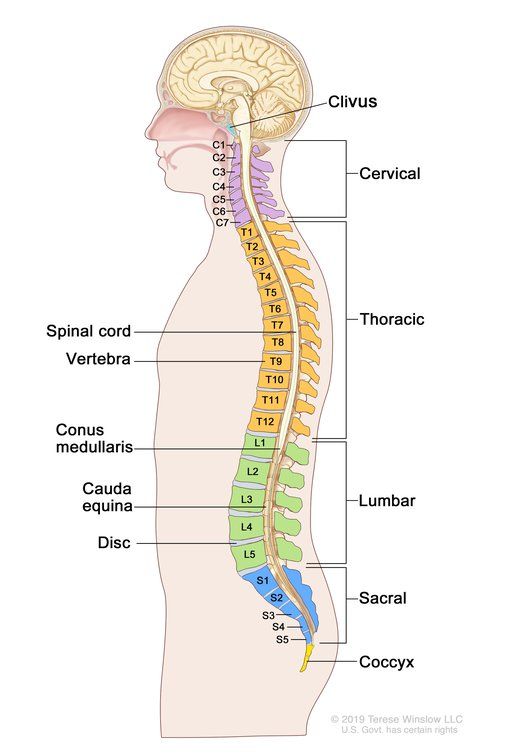First, it’s helpful to know a little about your spinal cord. It’s your body’s information highway, carrying messages from your brain to the rest of your body. Made up of nervous tissue, it runs from the base of your brain all the way down your back. It’s safely enclosed in the spinal canal, a tunnel that runs through your vertebrae — the 33 bones of your spinal column that are connected like the beads of a necklace.
Malignant or benign?
Spinal tumors may be malignant (cancerous) or benign (non-cancerous). Both are considered serious and are treated by our experts at Roswell Park.
- A malignant spinal tumor contains cancer cells, grows rapidly, invades healthy tissue nearby, and may be life-threatening. Many malignant tumors can be treated successfully, and improvements in therapy are enabling patients with these tumors to live longer while preserving their quality of life.
- A benign spinal tumor does not contain cancer cells, rarely invades nearby tissue or spreads to other parts of the body, and usually does not grow back after it is removed.
However, even a benign tumor can be serious, and should be treated without delay to prevent it from growing so large that it puts pressure on the spinal cord or nerve roots. When that occurs, it can lead to pain, paralysis, loss of sensation, and the inability to control urination or bowel movements. Benign spinal tumors that are not treated can also destroy bone and ligaments in the spine, leading to an unstable spinal column, pain and fractures.
Some benign tumors can become malignant in time. Many benign spinal tumors can be cured.
Primary or secondary?
- Primary spinal tumors start out in a single location in the spine, developing from cells in the spinal cord, nerve roots, spinal canal coverings or the bones of the spine.
- Secondary spinal tumors occur when cancer in another part of the body — such as the breast, lung, prostate, kidney or colon — spreads (metastasizes) through the bloodstream or lymphatic channels to the bones in the spine or to the spinal cord itself. Most cancerous spinal tumors are secondary (or metastatic) tumors, which can cause back pain and neurological problems as they grow in the vertebrae. Between 30-70% of all cancer patients will develop metastatic spinal tumors. They occur most often in patients with prostate cancer, breast cancer and multiple myeloma.

